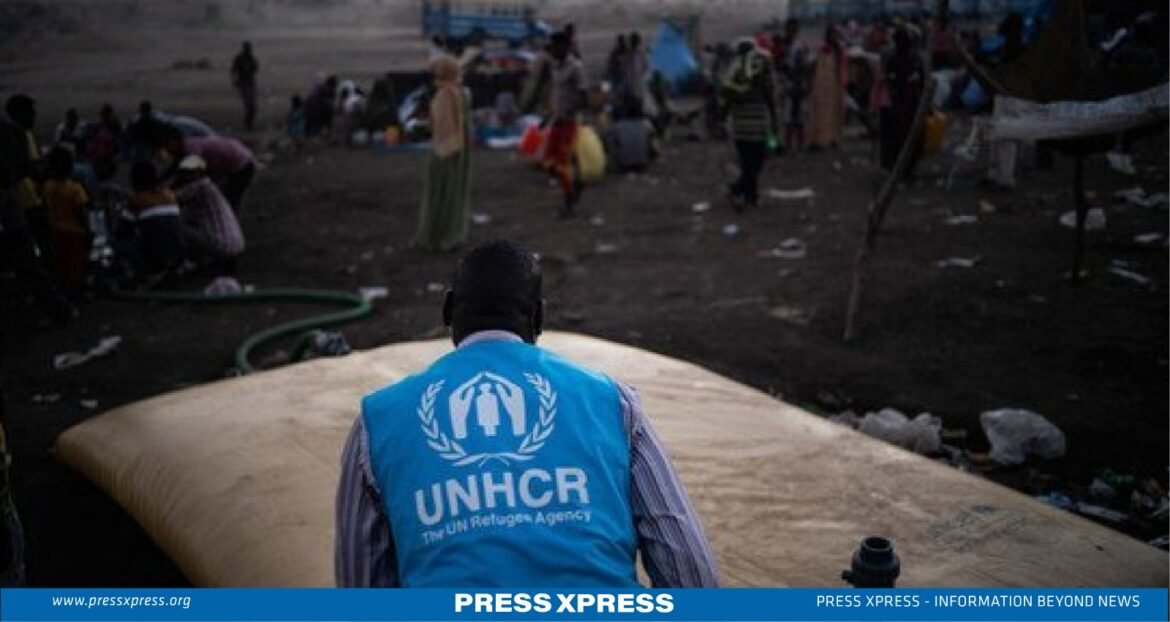According to the UNHCR’s annual report, it was emphasized that stateless individuals, frequently belonging to minority groups, frequently find themselves deprived of fundamental human rights and access to essential services
The United Nations High Commissioner for Refugees (UNHCR) has recently released its annual report, revealing a staggering statistic – at least 4.4 million people in 95 countries are living without a nationality or in a state of undetermined nationality. This distressing revelation underscores a growing global crisis, often overlooked in the midst of international tensions and geopolitical conflicts.
The report highlights the disheartening reality that the actual number of stateless people worldwide is likely far higher than reported. The invisibility of stateless individuals in national statistical exercises poses a significant challenge to understanding the full extent of this problem. Stateless individuals, predominantly belonging to minority groups, endure a life of deprivation, robbed of basic human rights and access to essential services. As a result, they face severe political and economic marginalization and are highly susceptible to discrimination, exploitation, and abuse.

Statement from UN Representative
UN High Commissioner Filippo Grandi reminds the international community that the progress made during the past year is still insufficient. Stateless individuals continue to suffer, and their rights are denied in many parts of the world. Grandi calls for swift action, underlining that many instances of statelessness can be resolved through straightforward legislative and policy changes. The urgency of the situation cannot be overstated.
Filippo Grandi, rightly emphasizes that with the growing global forced displacement, millions are being pushed to the margins, effectively excluded from their fundamental human rights and the opportunity to participate in and contribute to society. This exclusion is not just an issue of injustice but also a moral imperative that must be addressed on a global scale.
Global Forced Displacement
The UNHCR report also sheds light on the broader issue of global forced displacement. While the number of internally displaced people and international refugees had remained relatively stable for about two decades before the Syrian conflict in 2011, the subsequent years witnessed an alarming annual increase, nearly tripling the 2011 figures. The report identifies conflict, oppression, discrimination, violence, and climate change as significant factors contributing to this record level of forced displacement. Syria, Ukraine, and Afghanistan collectively account for nearly half of all refugees and individuals in need of international protection.
Bangladesh and the Rohingya Crisis
A sobering example of statelessness is found in Bangladesh, where the presence of Rohingya refugees has contributed to the highest number of stateless individuals in the world. Myanmar’s refusal to recognize the Rohingya as citizens has resulted in their statelessness, with nearly a million affected individuals reported by UNHCR as of the end of 2022. The forced displacement of approximately 630,000 Rohingya from Myanmar to Bangladesh in 2016 marked a significant and historic event, with the majority of them remaining stateless.
Meanwhile, Bangladesh Prime Minister Sheikh Hasina called on world leaders to join hands in forming a strong global partnership to eradicate homelessness. He emphasized that homelessness is a scourge that affects both developing and developed countries, but it is within our power to solve the problem. The Prime Minister shared Bangladesh’s successful experience in managing homelessness and providing free land and houses to the landless and homeless population in the country. In addition, he highlighted that his government is also addressing the challenges faced by climate-affected families. As an example, he cites the housing of 5,000 climate-refugee families in 139 multi-storey buildings in Cox’s Bazar.
Currently, about one million Rohingya Muslims who fled Myanmar’s military-led crackdown in 2017 live in camps in Cox’s Bazar.

Asia and Pacific Region
The concentration of refugees in the Asia and Pacific region is a troubling trend, with over 90 percent of the world’s refugees residing in just three countries: Iran, Pakistan, and Bangladesh. This concentration places immense strain on these nations’ resources and infrastructure, demanding international support to alleviate the burden.

Reality of Middle-Income Countries
UNHCR further emphasizes that 76 percent of the world’s forcibly displaced individuals find refuge in middle-income countries, exemplified by Bangladesh. This underscores the need for more equitable international support and burden-sharing in the face of a global humanitarian crisis.
UNHCR’s Call to Action
UN High Commissioner for Refugees, Filippo Grandi, commended the positive strides in addressing statelessness and urged states worldwide to take immediate action to ensure that no one is left behind. Statelessness, though complex, can often be resolved through legislative and policy changes. Grandi highlighted that the rising global forced displacement is pushing millions to the margins, depriving them of their basic human rights and the opportunity to participate in and contribute to society. This exclusion is not only unjust but must also be addressed to build a more inclusive world.
International Commitment and Positive Developments
Amidst the concerning statistics, the UNHCR report highlights positive developments in the past year. Several countries have made commendable efforts to address statelessness. For instance, the Kyrgyz Republic and the Republic of Moldova have introduced legislative safeguards to prevent statelessness at birth, reducing the risk of future stateless generations.
Portugal has established a legal framework to regulate statelessness status, providing clarity and legal recognition to those previously living in the shadows. In North Macedonia, stateless people have been granted the opportunity to acquire nationality, a significant step toward their inclusion in society.
In Kenya, approximately 7,000 stateless individuals from the Pemba community were officially recognized as citizens, granting them access to basic rights and services. In neighboring Tanzania, over 3,000 individuals at risk of statelessness were granted nationality, offering them a brighter future.
In conclusion, the UNHCR report serves as a stark reminder of the growing crisis of statelessness and forced displacement, with millions of lives hanging in the balance. It is imperative for the international community to come together and find sustainable solutions to protect the rights and dignity of those who have been rendered stateless, ensuring that they are not left in the shadows of a polarized world.


